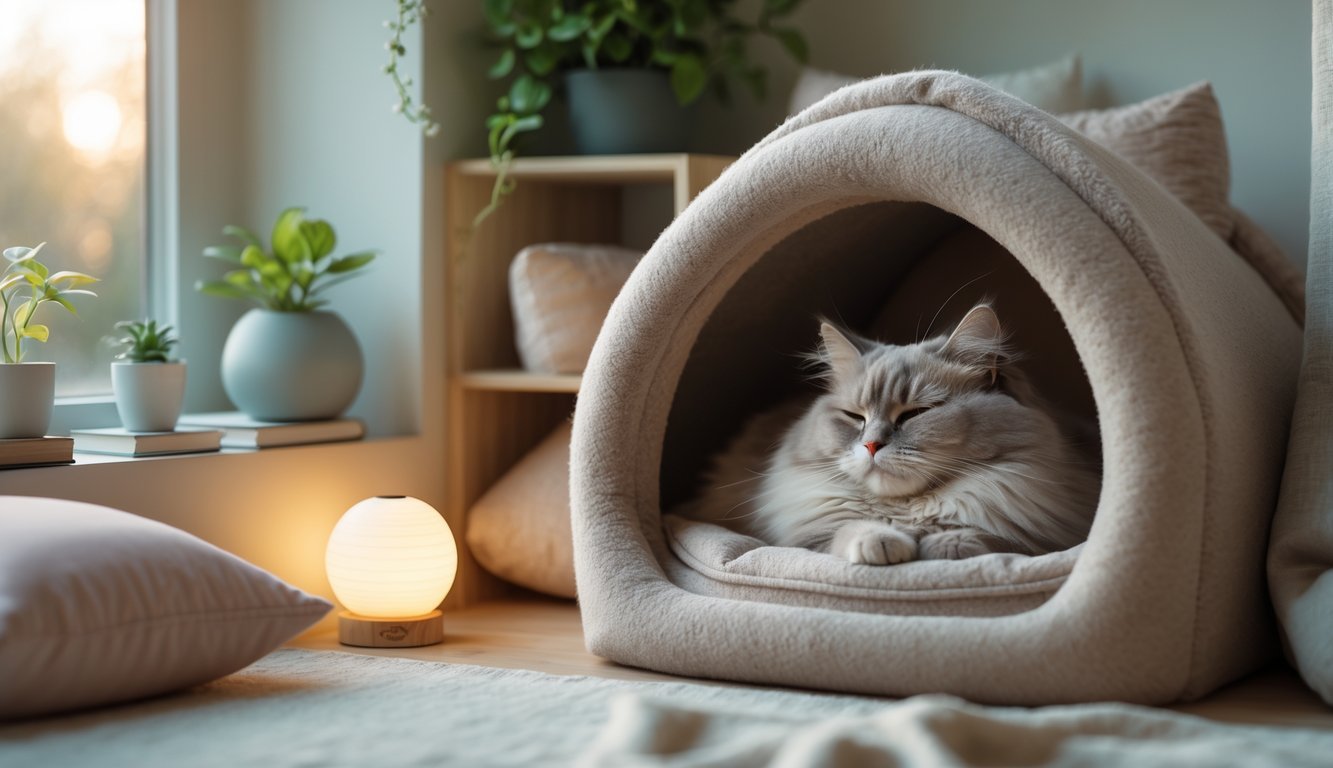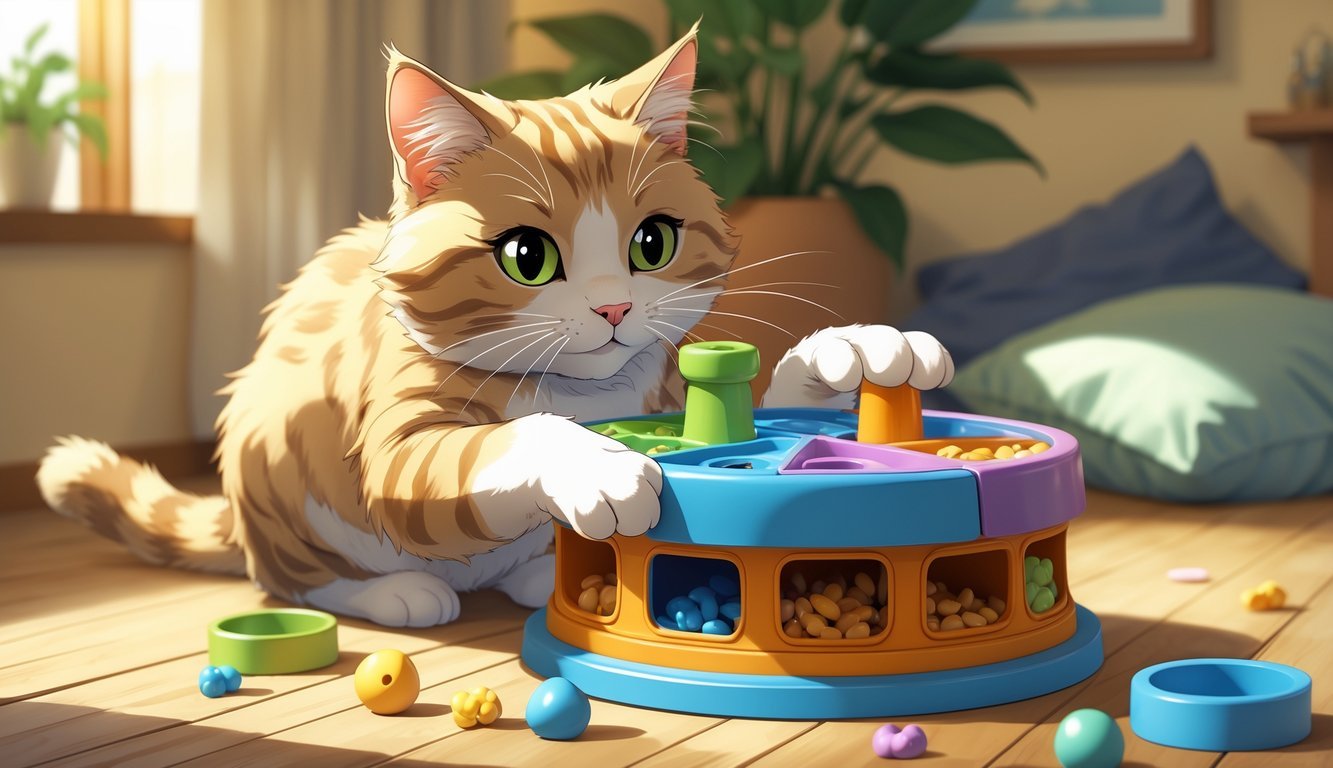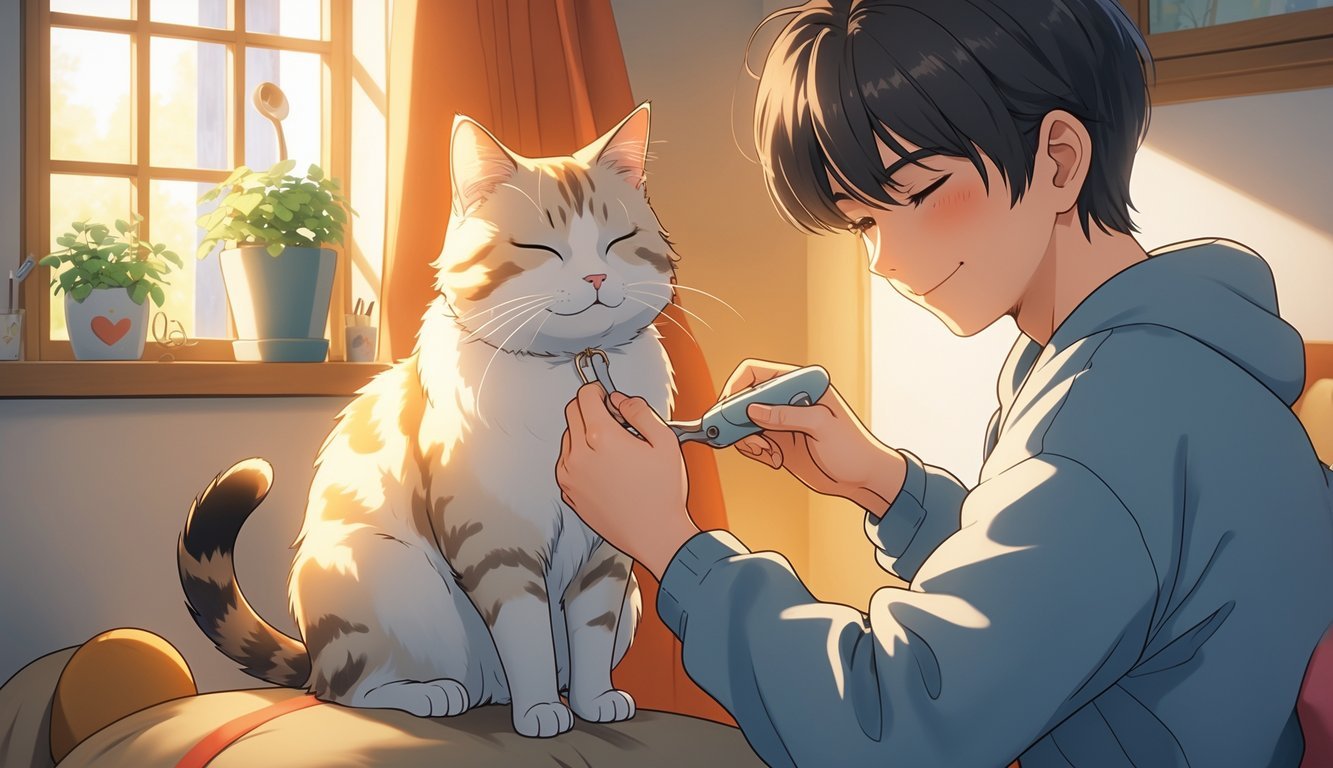PsychNewsDaily Publishers
100 Summit Drive
Burlington, MA, 01803
Telephone: (320) 349-2484
PsychNewsDaily Publishers
100 Summit Drive
Burlington, MA, 01803
Telephone: (320) 349-2484
Living with a cat can bring joy but also challenges. Implementing interactive play, scratching posts, and consistent routines can improve cat behavior and reduce stress.

Living with a cat is a joy, but sometimes their behaviors can drive you up the wall. Scratching the couch, sudden bursts of aggression, or endless meowing—sound familiar? The good news: you can fix most common cat behavior problems with a few quick, realistic changes.
This guide will help you create a calmer, happier home by tuning into your cat’s needs and giving them better ways to use their energy. You’ll find practical, straightforward strategies that actually work—without making your day more stressful.

Cats need more than just food and naps. If they don’t get enough stimulation, they’ll start scratching things, knocking stuff over, or meowing for attention.
Grab some toys—think feather wands, laser pointers, or bouncy balls—and let your cat chase, stalk, and pounce. You’re basically giving them a safe way to “hunt” indoors.
Switch up the toys now and then so things don’t get boring. Even just 15-20 minutes a day makes a difference.
If you’re busy, break playtime into short bursts throughout the day. It still counts.
Playing together builds trust and helps your cat burn off energy. Plus, it’s kind of fun for you too.

Cats scratch to stretch, keep their claws healthy, and mark territory. If you don’t give them a spot, they’ll pick your favorite chair.
Put several scratching posts around your place. Aim for at least one per cat, and toss in an extra if you can.
Notice where your cat likes to scratch—maybe after a nap, near a window, or by the litter box. Set up posts in those locations.
Offer different types: tall posts for stretching, flat pads for variety. Some cats love sisal, others go for cardboard or wood. Just try a few and see what sticks.
When your cat uses a post, toss them a treat or give some gentle praise. That helps them get the idea.

Slap some double-sided sticky tape on the spots your cat scratches most. They really hate the sticky feeling, so they’ll usually leave those areas alone.
The tape’s pet-safe and comes off easily when you’re done. Most brands won’t leave a mess behind, which is a relief.
Cut the tape to fit corners, arms, or wherever your cat’s been aiming their claws.
For best results, put a scratching post or pad nearby. That way, your cat has a better choice right next to the “off-limits” spot.
You might need to reapply the tape for stubborn cats, but honestly, it’s a cheap and quick fix. Stick with it and you’ll probably save your sofa.

Loud noises, strangers, or changes at home can really stress out some cats. They need a safe place to hide and chill out.
You can use a cardboard box, a covered cat bed, or even a tunnel. Just tuck it in a quiet corner.
If you have more than one cat, set up a few hiding spots. That way, nobody has to fight for space.
Toss in a favorite blanket or something that smells like home. A familiar scent is always comforting.
Placing toys or scratching pads nearby gives your cat something to do if they’re feeling nervous.
When cats have a spot to retreat, they feel more in control and less anxious.

Puzzle feeders turn mealtime into a game. Instead of scarfing food from a bowl, your cat has to figure out how to get the kibble out.
If your cat eats too fast, a puzzle feeder slows them down. They’ll bat, roll, or paw at the feeder, getting food in small bites.
These feeders give your cat’s brain a workout, too. A busy cat is way less likely to act out or bug you for attention.
You can buy puzzle feeders at the pet store, or make your own with a cardboard tube or plastic bottle.
Start with an easy one so your cat gets the hang of it. As they get better, you can make things trickier.
It’s a simple way to keep your cat occupied and make meals more interesting.

When your cat’s behaving calmly, let them know you appreciate it. Give a treat, a gentle pet, or some kind words.
Timing matters—give the reward right after the calm behavior. If your cat sits quietly instead of clawing the furniture, that’s your moment.
You don’t have to use treats every time. A chin scratch or soft praise works just as well, and you won’t risk overfeeding.
If you do this regularly, your cat will start to get it. Calm behavior brings good things.
Keep these sessions short and upbeat. It builds trust and helps your cat learn what you like.

Plug in a pheromone diffuser if your cat seems on edge. These devices release synthetic cat pheromones that signal safety and comfort.
Cats often chill out when these are around. If you’ve got a multi-cat household, diffusers can help cut down on fighting.
They’re easy to use—just plug one in and let it do its thing. No strong smells, either.
You might see results in a week or two, but every cat’s different. Some take a little longer to mellow out.
If things don’t improve, it’s worth chatting with your vet for extra advice.

Cats love routine. Feeding them at the same times every day makes them feel secure and less likely to beg or overeat.
Most adult cats do fine with two meals, about twelve hours apart.
Don’t forget playtime. Schedule daily interactive play to help your cat burn off energy and stay sharp.
Simple toys like wands or balls are great for this. You don’t need anything fancy.
A predictable routine helps prevent a lot of behavior problems. Cats who know what to expect are generally happier and less anxious.
Try to stick to the schedule, even on weekends. Small changes are okay, but big ones can throw your cat off.

If you keep your cat’s nails trimmed, you’ll save your furniture, your floors, and your own skin from scratches.
Most cats need a trim every couple of weeks, but it depends on how active they are. Indoor cats usually need it more often.
Check by gently pressing your cat’s paw to extend the claws. If they’re sharp, curved, or snagging things, it’s time.
Use cat nail clippers and just snip the sharp tip—don’t go near the pink part (the quick). If you’re nervous, take off a tiny bit at a time.
Regular trims keep your cat comfy and prevent painful snags or injuries.

Yelling at your cat might feel satisfying in the moment, but it just scares them. They won’t learn what you actually want.
Instead, calmly redirect them. If they scratch the couch, move them to a scratching post. If they jump on the counter, set them down and offer a toy or another spot.
Cats learn better from positive experiences. Show them what’s right, and reward it.
Every time your cat does something you don’t want, gently guide them to the right choice. Over time, they’ll catch on.

Your cat’s actions come from instinct, environment, and daily needs. If you notice what triggers unwanted behavior and watch how your cat communicates, you can respond in ways that build trust and lower stress.
A lot of cat behavior problems start when something changes at home. Maybe you move to a new place, rearrange the furniture, or bring in another pet. Even something as small as switching litter brands can throw your cat off.
Boredom causes trouble, too. Cats need both mental and physical activity. If they don’t get enough play or stimulation, they might scratch up your furniture, meow nonstop, or even overgroom.
Sometimes, health issues pop up as odd behavior.
Keep an eye on these triggers. Spotting them early helps you know when your cat just needs time, or when it’s time to call the vet or add more enrichment.
Cats have all sorts of ways to let you know what’s up. They use body language, sounds, and their usual habits to get the message across. A flicking tail, ears flattened back, or wide pupils usually mean stress or irritation.
On the flip side, you’ll see slow blinking, kneading, or those soft head bumps when your cat feels relaxed and trusts you.
Vocal cues are important, too. If your cat gives short meows, they probably want attention. Loud or drawn-out meows? That might mean hunger, frustration, or discomfort.
Notice when your cat’s routine changes. If they stop grooming, eat less, or start hiding, they’re likely asking for help. Picking up on these signals early makes life easier for both of you.

Cats feel safer when their space fits their natural needs. A good home gives them cozy spots to rest, ways to play, and places to avoid other pets if they want.
Your cat wants more than just food and water. Mixing things up in their daily routine keeps them active and less likely to pick up bad habits.
Give your cat vertical spaces like cat trees or shelves. Cats love climbing and watching the world from up high. Window perches are a hit, too—who doesn’t like birdwatching?
Change up their toys often to keep things fresh. Wand toys, puzzle feeders, and little balls get them moving and tap into their hunting instincts.
Put scratching posts around in different materials—try sisal or cardboard. Set them near where your cat likes to rest or where they might scratch your furniture.
Try hiding treats around the house or using food-dispensing toys. These simple tricks challenge your cat’s brain and help prevent boredom.
Living with more than one cat? That can get tense if your cats start to feel like there’s not enough to go around. You can keep the peace by making sure each cat has its own stuff—no need for extra drama.
Set up multiple litter boxes in different spots. Most folks go with one box per cat, plus an extra just in case. And honestly, nobody likes a dirty litter box, so try to keep them clean and easy to get to.
Give your cats more than one feeding station. That way, nobody has to fight for their dinner. Put water bowls around too—maybe in the hallway, maybe by a window—so your cats are more likely to drink enough.
Every cat needs a private spot to chill. Maybe it’s a cozy bed, a window perch, or just a quiet corner where they can hide out.
Pay attention if you notice hissing, chasing, or one cat blocking the other from food or the litter box. If things get heated, you can add a baby gate or rearrange some furniture to give everyone a safe escape route.